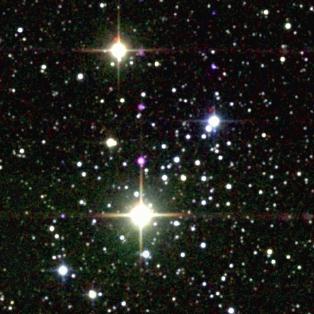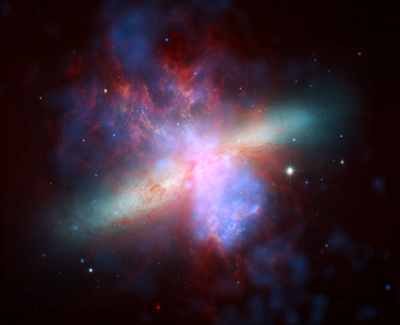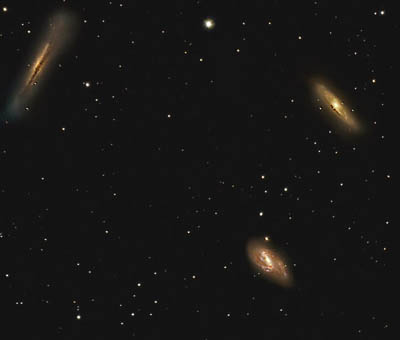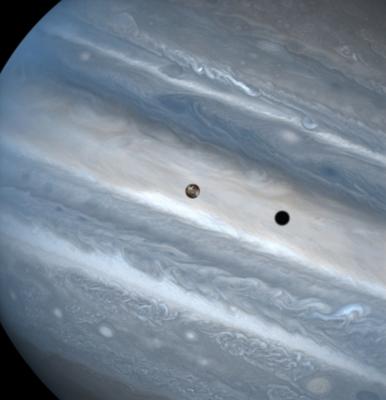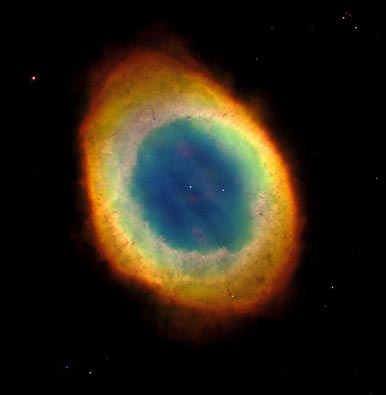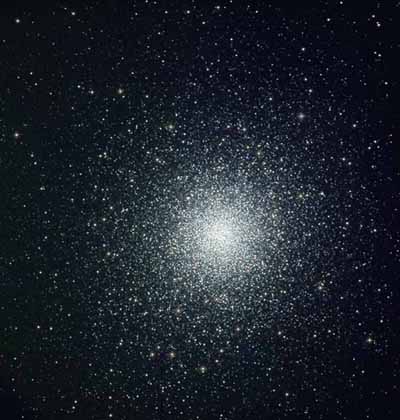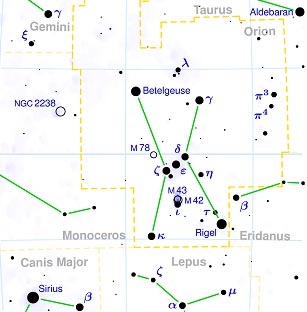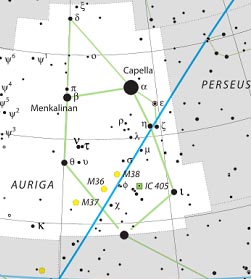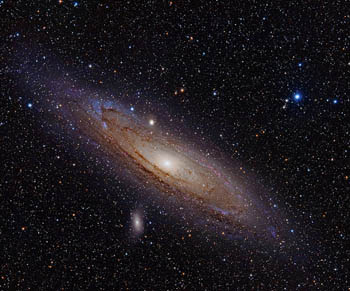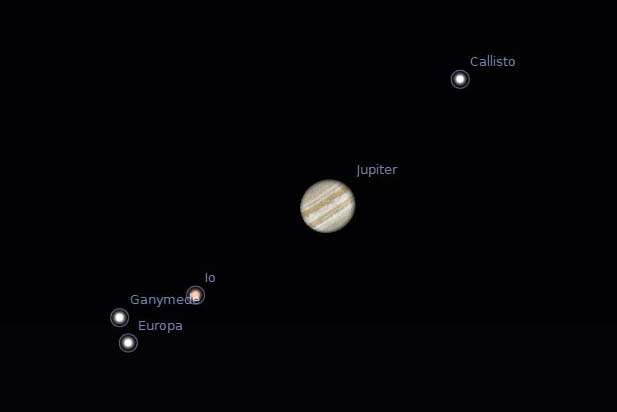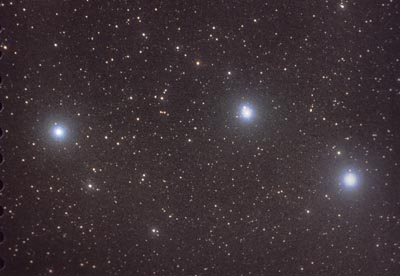
Mizar
and Alcor in the centre of the handle of Ursa Major
(Photo: Akira Fujii, Firefly
Books Ltd, Canada) | All
things considered, it was a great, warm night for stargazing and after dodging
bad weather and clouds for most of January and February it was also a huge relief
to be star gazing again. Phew! Five of us met at our usual meeting place at the
Red Lion, and then we set course for the viewing area hidden in the dark Wiltshire
countryside.
We had a nearly full, bright, waxing gibbous Moon and so
were not able to see the twisting sinews of the Milky Way across our panorama,
but the stars and constellations were easy to pick out, and one of first excursions
was to the wonders of the Orion Nebula (M42) with its two main bunches of nebulosity
as seen with low power eyepeices such as a 32mm or a 24mm.
Next we viewed
the Hyades in Taurus right next to Aldebaran, which looked as good as ever. Aldebaran
is an old and
extremely bright Red Giant, rivalled only by Betelgeuse (in
Orion) in colour and magnitude, and at a distance 65 light years. |
We could not visit Taurus without then visiting the Pleiades Cluster (M45), which
was absolutely great. We also endeavoured to look for the Crab Nebula (M1) at
the opposite end of Taurus and though we were in the right spot, the brightness
of the Moon made it near impossible to resolve the Supernova remnant, a mere 6500
light years away!
Anyway, on this bright Moon-lit night the constellations
were the stars (sorry, no pun intended) of the evening and we identified the equalateral
triangle of Procyon (Canis Minor) sometimes called the 'dogstar', Betelgeuse (Orion)
and Sirius (Canis Major) and then went over and looked Cepheus, the father of
Andromeda, and Cassiopeia, her mother with its distinctive 'W' shape, both next
to each other in the night sky. The high constellations such as Auriga were also
prominent on this Moonlit night.
Mars, our cold Winter companion of late
was also lovely, warm in colour, and high in the sky above the Moon.
One
of the best views of the evening should surely have been of Mizar and its companion
Alcor in the handle of Ursa Major, the Big Dipper. Easy to separate with a good
telescope; it is more technically noted as the Mizar-Alcor stellar sextuple system,
consisting of the quadruplet system Mizar and the binary system Alcor, which basically
means that there is more to this 'double' than meets the eye, and maybe it is
not a 'double' after all, but only when viewed in isolation.
Just
after 8.30pm in the east, and well-spotted by Bernie was the real star (sorry,
its that silly pun again!) of the evening, at least for those assembled in our
motley band, and that was the rising of Saturn. A great sight to see at
any time when it graces our skies. On this night there was much atmospheric aberration
and it was a little fuzzy to start with, however, it gradually resolved itself
and we were treated to its fine, paper-thin rings, which are almost side-on at
the moment.
So a great evening, after which we retired to the Red Lion
for some well-earned refreshment! |
